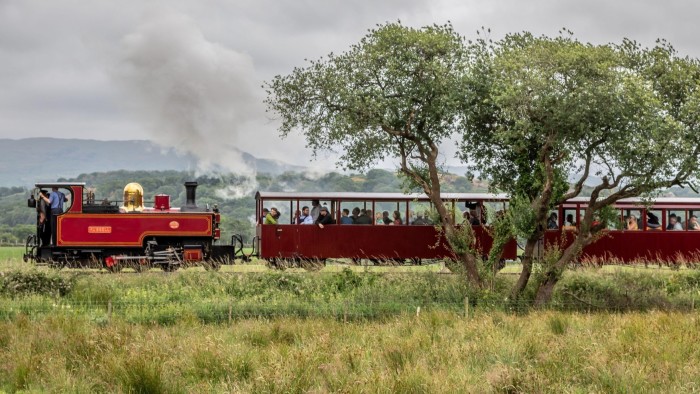Unlock the Editor’s Digest for free
Roula Khalaf, Editor of the FT, selects her favourite stories in this weekly newsletter.
Many of the UK’s tourist rail operators are in the rare position of hoping for damp weather after an unusually dry spring prompted at least six to keep their steam engines in the shed to reduce the risk of fires.
The railways, mostly built on narrow tracks in mountainous parts of Wales, have instead been running services with diesel engines — in some cases those reserved for maintenance trains. One operator is investing in water-spraying wagons.
The popular Jacobite tourist service on the main line railway between Fort William and Mallaig in the Scottish Highlands has also been forced to use mainly diesel instead of steam engines.
James Shuttleworth, commercial manager of West Coast Railways, the Jacobite’s operator, said: “I must be one of the few people who’s praying for rain.”

The railways have acted after the UK in March and April received only half its average rainfall levels.
By levels of rainfall, 2025 has been the driest year since 1997 and the seventh-driest year on record since comparable data began in 1931, according to Financial Times analysis of Met Office data.
A Fire Severity Index for England and Wales compiled by Natural England shows the fire risk across many rural tourist areas is “very high”, the second highest level behind “exceptional”.
Stuart Williams, general manager of the Vale of Rheidol and Brecon Mountain railways in Wales, said his operations were suffering an “undeniable financial impact”.
Paul Lewin, general manager of the linked Ffestiniog and Welsh Highland lines in Snowdonia, said his railways were investing in two water-spraying trains to keep steam engines running safely. Only the Welsh Highland’s train is ready, meaning the Ffestiniog is among the operations forced to resort to diesels.
The affected lines are among scores of “heritage railways” across the UK, ranging from those offering short trips on restored tracks to substantial operations covering distances of 20 miles or more.
While such operations use some vintage diesels dating as far back as the 1950s, most primarily attract visitors with the offer of a train hauled by a traditional steam engine.
Steve Oates, chief executive of the Heritage Railway Association, said that during the “current prolonged dry spell” a “number of railways” had stood down their steam locomotives and used diesel power instead to “reduce any remaining risk of lineside fires”.

Among Welsh narrow-gauge lines, the Welshpool and Llanfair has joined the Ffestiniog, Vale of Rheidol and Brecon Mountain railways in temporarily switching to diesel-only operations.
In England, two standard-gauge lines, the North Yorkshire Moors and Ecclesbourne Valley railways, have also parked all their steam locomotives.
Williams said that both the Vale of Rheidol and Brecon Mountain railways, which are merging, had taken the “precautionary” decision to suspend steam after experiencing “small lineside fires”. In dry conditions, sparks from engine fireboxes can easily start blazes in nearby undergrowth.
He said the problem had become worse since steam engines had moved away from burning Welsh-mined coal, which produces fewer sparks, to using imported products.
Williams said his railways had lost revenue partly because their diesels were less powerful than the normal steam power and train lengths had to be cut.
He added: “While the journey remains spectacular behind a diesel, it doesn’t quite stir the same emotion — and some visitors have postponed until steam returns.”


